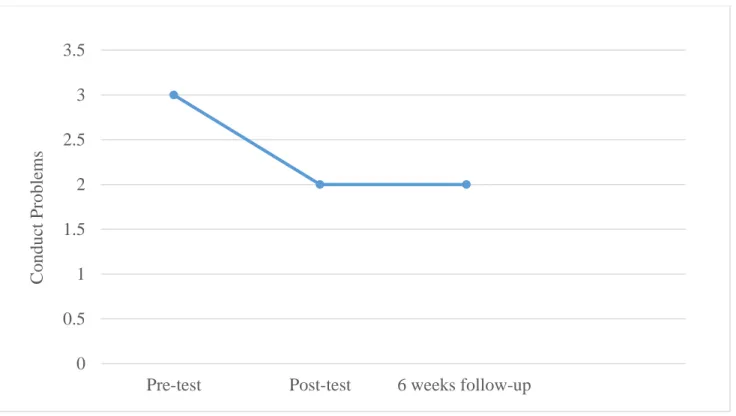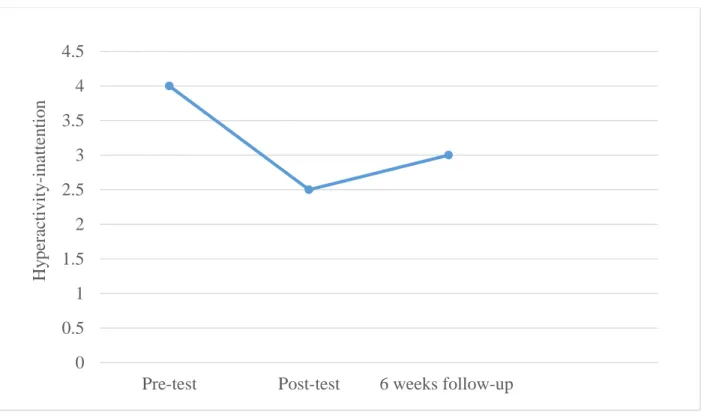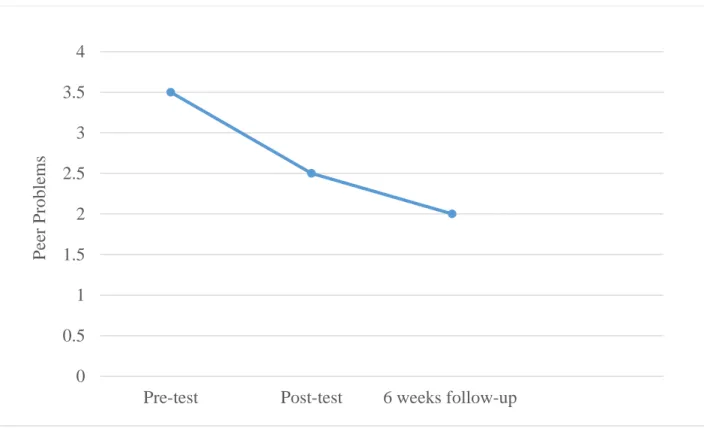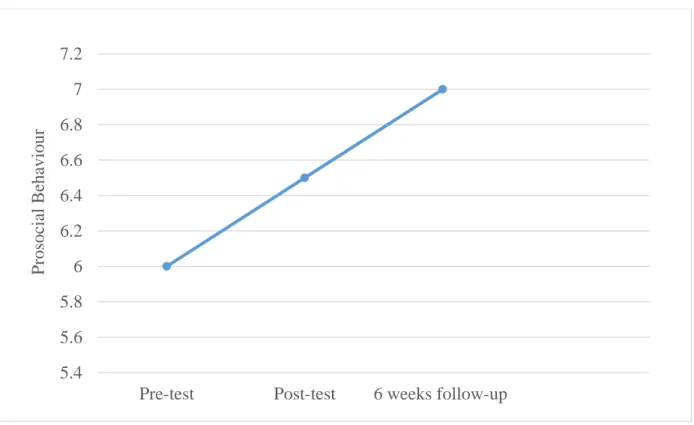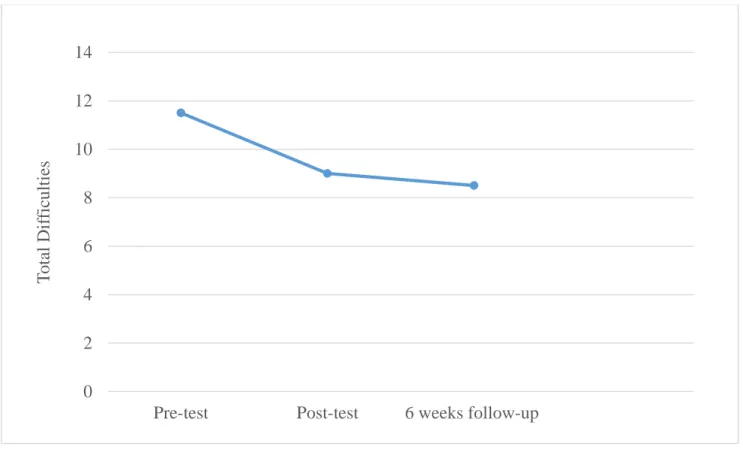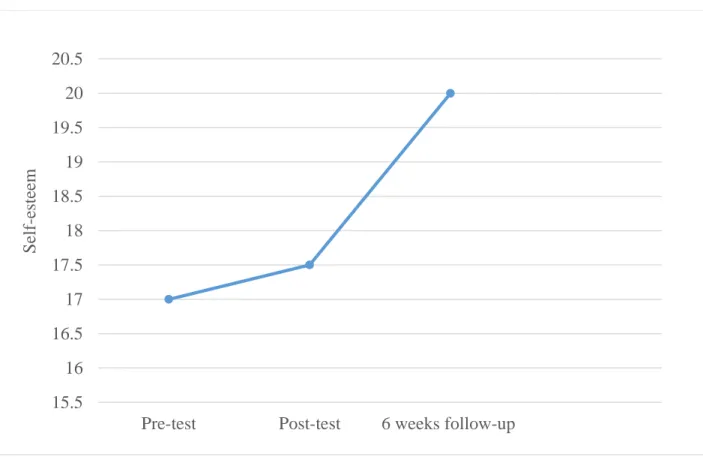The results of the study indicated a significant reduction in behavior problems and total problems at the post-test, followed by a significant reduction in hyperactivity-inattention and peer problems at the follow-up assessment. Self-esteem also reported a significant increase at follow-up assessment, but no significant differences were found for emotional symptoms and prosocial behavior.
Introduction
According to the National Health Morbidity Survey (2015), the overall prevalence of mental health problems among Malaysian children was 12.1%. While mental health problems by gender are higher in boys than girls, at 12.4%.
Literature Review
The activities in the SSL program can also increase the children's self-esteem and social skills. Therefore, raising the level of self-esteem will simultaneously lead to more prosocial behavior in the children.
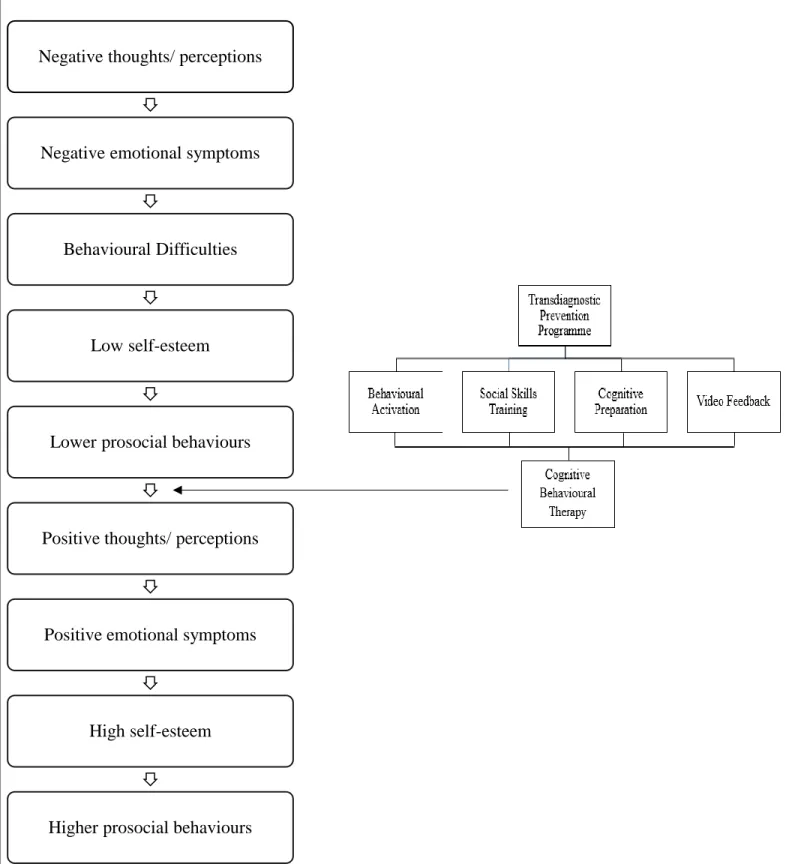
Methodology
After the intervention, participants were required to complete a self-administered post-test questionnaire containing strengths and difficulties. The invitation and the URL of the questionnaire were sent to the participants via the social media WhatsApp.
Findings and Analysis
Finally, there is no significant difference in peer problems (p = .15) between posttest and 6-week follow-up. Finally, there is no significant difference in self-esteem (p = .07) between post-test and 6-week follow-up.
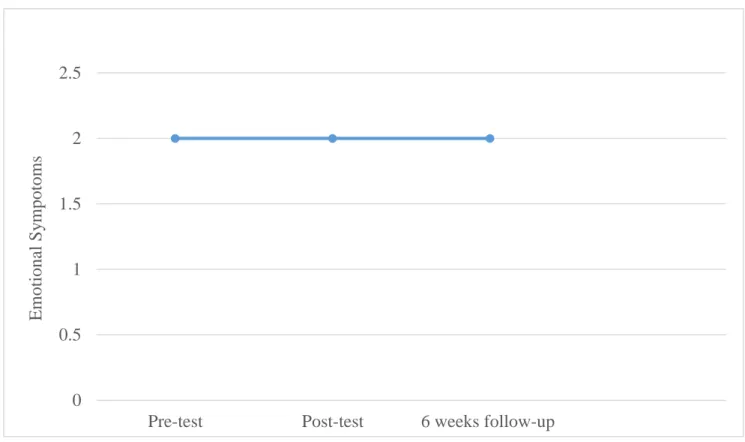
Discussion
Overall, the children's total difficulty score showed an immediate and significant reduction between pre- and post-intervention. The reason may be related to the age group of the participants in this study. Therefore, evaluating the effectiveness of a transdiagnostic prevention program in a local context could significantly contribute to the cause.
Thus, the potential threats related to the internal validity of the program are mainly history and testing (Knapp, 2016). On the other hand, the potential threat associated with the external validity of the program is largely due to the lack of random sampling.
Little Giants
PHEH KAI SHUEN THONG KOON NAM
Ice Breaker
- Make a personalized name card (15 minutes)
- Agreeing on group rules (5 minutes)
- Ice breaker game 1: Squirrel and Tree (15 minutes) How to play?
- Ice breaker game 2: Great wind blows (15 minutes) How to play?
You can show your own name card that you have decorated to the children as a sample. When all the children have finished their name cards, you can ask them to put their name cards on by giving them a string. You can then invite the children to show their personal name cards and introduce themselves to their friends.
During the session, you can ask the children (or volunteers) to read the group rules and ask the children if they can think of any other rules. All the children must put themselves into groups according to the instructions.
Self Awareness
- Self-portrait (45 minutes) How to play?
- Everyone is different (30 minutes) How to play?
- Feeling Thermometer (15 minutes)
Then the children must list the similarities and differences between themselves and the person he or she has drawn. When the children have finished drawing and writing, discuss about - Who is the person they drew. The similarities and differences of themselves with the person they have draw Debrief session.
You can ask the children to monitor their own feelings and record them in the column each time the program is running. The children can fill in the time and date on the feeling thermometer according to their mood at that time.
Feelings, thoughts, and behaviours
- Hunt your feelings (45 minutes) How to play?
- Who am I (30 minutes)
- Tele match (45 minutes)
As a teacher (or facilitator), you can ask the children to voluntarily share their examples. You can also mention to the children that emotions can be recognized through facial expressions and body language. When the slides are finished and the guessing process is complete, tell the children the correct identity of the character.
You can tell children that not all thoughts in their head are true. Please note that child safety is the most important aspect of the entire program.
Linking feelings, thoughts, and behaviours
- Creating your own snow globe (45 minutes)
- Role play (45 minutes) How to play?
- What’s in the box challenge (30 minutes)
It is recommended that the character with unhelpful thoughts be played by a trainer or facilitator to avoid any unpleasant feelings for the children. Children can discuss in a group and brainstorm some ideas to challenge the character with useless thoughts. Put an object (furry key chain or slime) in the mystery box and let the children guess.
Make sure all children get at least one piece of paper. After the activity, you can ask the children to volunteer and share their feelings, thoughts, body signals and behaviour, which they have written on the paper in front of the group.
Stress
- Meet the Brain (30 minutes) How to play?
- Body Signals (30 minutes) How to play?
- Eustress and Distress (30 minutes) How to play?
While jumping, you can ask children to feel and monitor their heart rate and breathing. With this activity, have children notice changes in their body signals. You can then discuss with the children how their body reacts when they feel stressed (body signals).
After the discussion, you can ask the children to feel the body signals when they feel stress on a piece of A4 paper with an outline of the human body. You can explain to the children that the smiley balloon they are currently holding acts as the eustress.
Learning to Relax
- Progressive Muscle Relaxation (15 minutes)
- Mindfulness game (15 minutes) How to play?
- Outdoor Detective (30 minutes) How to play?
You can demonstrate the steps to the children and invite them to do the steps with you. To begin this session, ask the children to sit in a circle and blindfold themselves with an eye mask. You can announce the answer by asking the children to remove their eye masks and look at the correct answer.
It is highly recommended to take the kids to a field or other places with nice scenery. You can ask the children to use colored pencils to draw a landscape they have seen on a piece of paper.
Enhancing Social Skills
- Maze Runner (40 minutes)
The role of the leaders and co-leaders is to verbally guide their members through the obstacles. e.g. Start by asking the children to reflect on the activity and identify what some of the are. important characteristics of a good leader. e.g. honesty, calmness, clear instructions, responsibility and benevolence). It is also important to discuss what will happen if the leaders do not have these important qualities. e.g. deceive someone, put others at risk of getting hurt).
Therefore, it is the responsibility of those who can "see" to help guide those who cannot. Thus, when helping/leading others through their challenges, it is extremely important to practice the important characteristics of a good leader.
A laser field made with plastic ropes. This would require a switch between
A maze made from
- What Do You See? (30 minutes)
- The Telephone Game (20 minutes)
Then put all the puzzle pieces in an opaque bag and let the children lucky draw the pieces one by one. Start by asking the children if it was difficult to correctly guess what the whole picture was. This activity involves children whispering several messages from one person to another to pass the message to the last person.
Then the children should only pass the message on by whispering the message to the next person in line. After reading all the messages, remove the blindfolds and let the children compare the original message and what they wrote.
Problem-solving Skills
- Telepathy (30 minutes)
The role of the artist is to draw a picture based on the descriptions given by the other members of the group. The role of the other group members is to describe to the artist the picture in their given drawing. Both parties may not disclose their content to each other. EG other group members may not show the artist the given picture and the artist may not show other group members what he or she has drawn).
Show some of the closest replicas and raise the question of why this task may be more challenging for some and less so for others. Being able to clearly describe and represent what we have in mind, even in the simplest language, is a good way to overcome or avoid conflict altogether.
A coal train. Popular back in the early 19 th century
A sailboat. High waves
A crazy robot. His buttons are all in different shapes
A Christmas tree
A British double decker bus
Apollo 11. The first to land on the moon
- Don’t Break the Egg (60 minutes)
- Pass the Ball (40 minutes)
This activity involves the children designing and making a safety device that will allow an egg to be dropped from a greater height without breaking. Gather all the children back into the classroom for a little rest and end the activity with a debriefing session. Once the children understand how the concept of 1-2-3 steps works, encourage them to apply it in every problem they may encounter.
Once everyone has had a chance to talk about a problem, the teachers move on to remind everyone of what they learned in the previous activity – the 1-2-3 steps of problem solving. The first round of passing the ball is considered step one: name the problem.
Review
- A short review on sessions 2- 8 (15 minutes)
- Gratitude messages (15 minutes)
- Letter to self (15 minutes)
First, you can ask the children to write a short gratitude note to the people they are grateful to, such as parents, teachers, friends and more. The children can write their message on the supplied colored paper, cut it out in the shape of love, and they can pass it on to the people for whom they are grateful. I will plan a schedule for myself so that I can finish my homework on time and use the extra time to play with my friends.
In addition, it is important for us to cooperate well with our friends so that we can achieve our goal. In the future, I hope that I can get good results so that I can become a doctor later.
FYP-2
34;Syrian Refugee Children: A Study of Strengths and Difficulties", Journal of Human Rights and Social Work, 2018. 34;Using the Strengths and Difficulties Questionnaire (SDQ) to Predict Emotional and Behavioral Difficulties on Positive and Negative Affect Among Adolevantages Among 34;'n Nota oor die invloed van uitskieters op parametriese en nieparametriese toetse", The Journal of General Psychology.
34; Evaluation of a short-term, cognitive-behavioral intervention for elementary-aged children with anger-related difficulties", School Psychology International, 2012. , Cognitive therapy and research. 34; Strengths and difficulties questionnaire as a control instrument in a sample community of high school graduates in Sweden", Nordic Journal of Psychiatry, 2008.
34;A Study of Self-Esteem in Married Adolescents by Pregnancy and Education Level", Procedia - Social and Behavioral Sciences, 2010.
